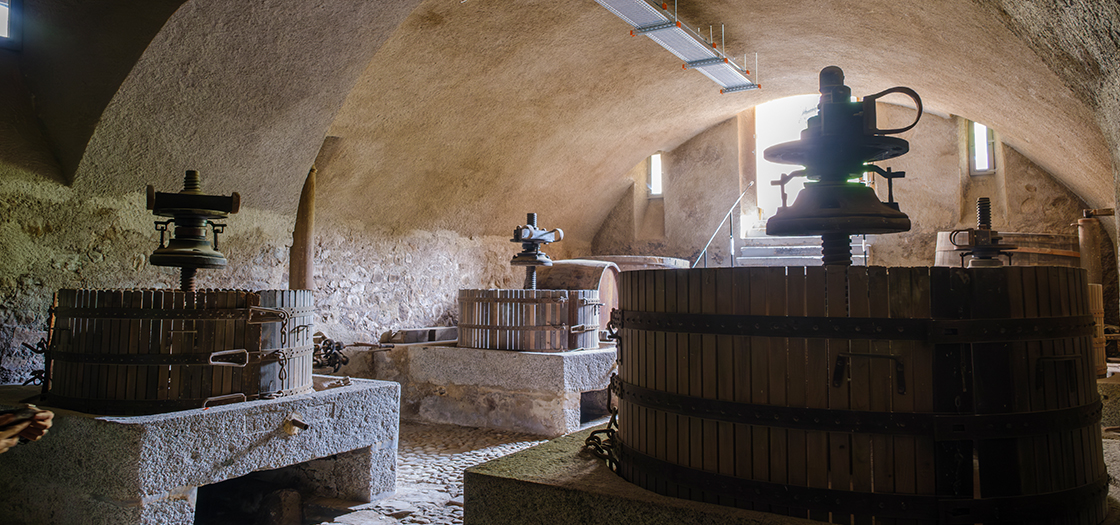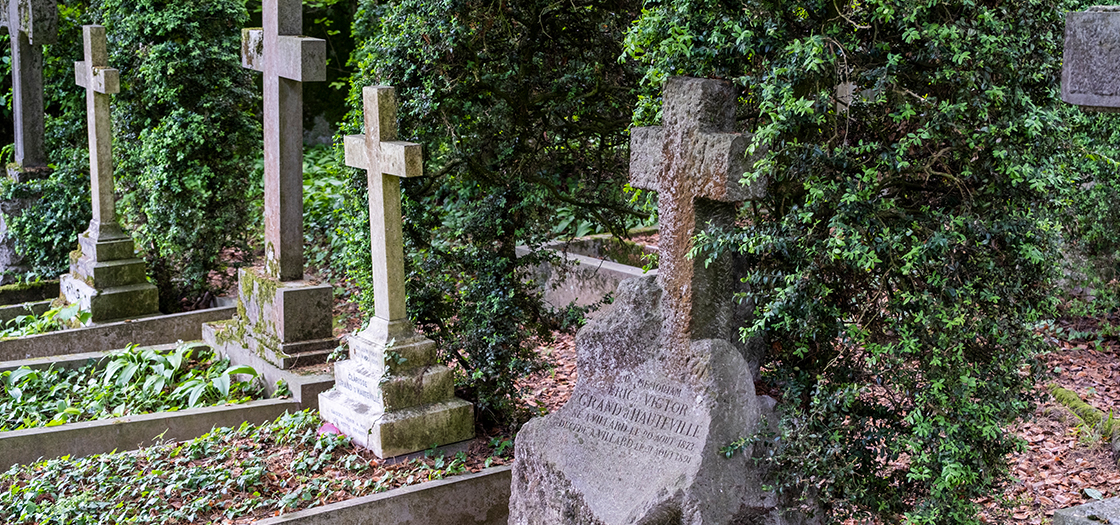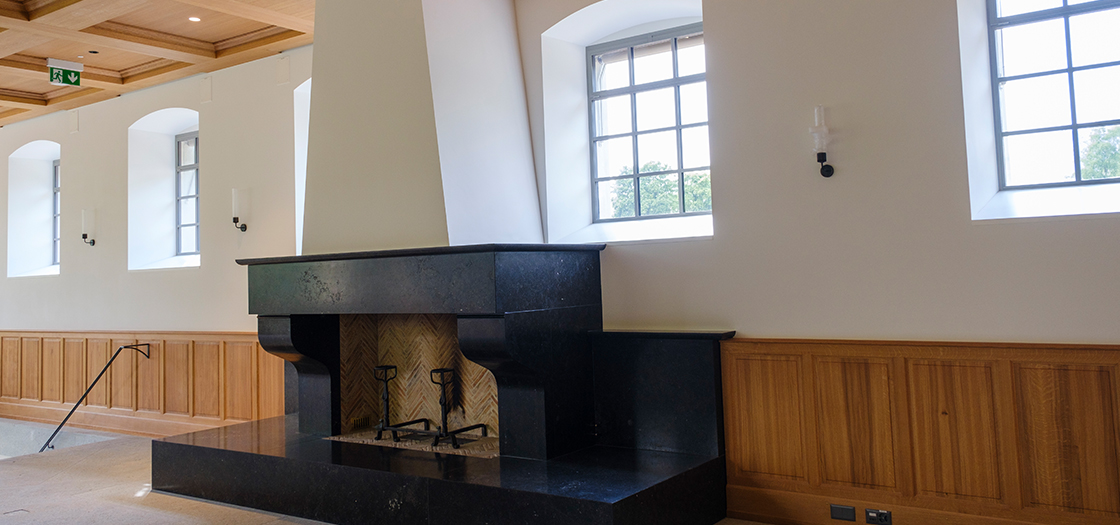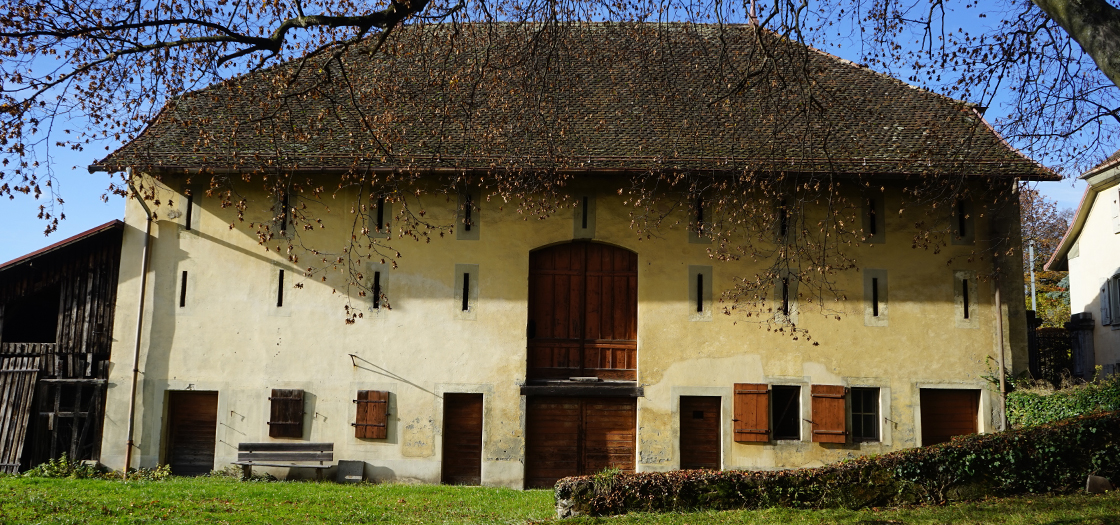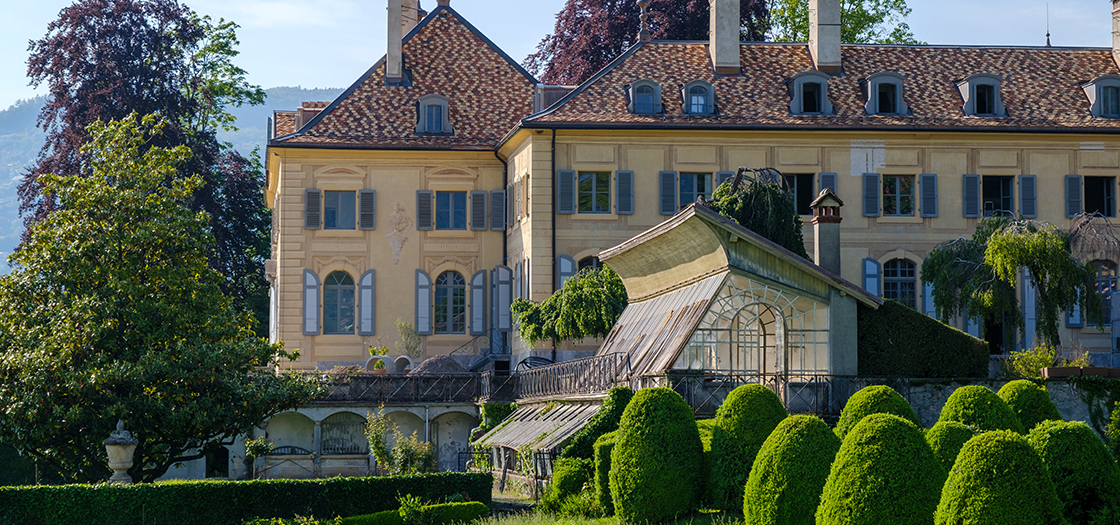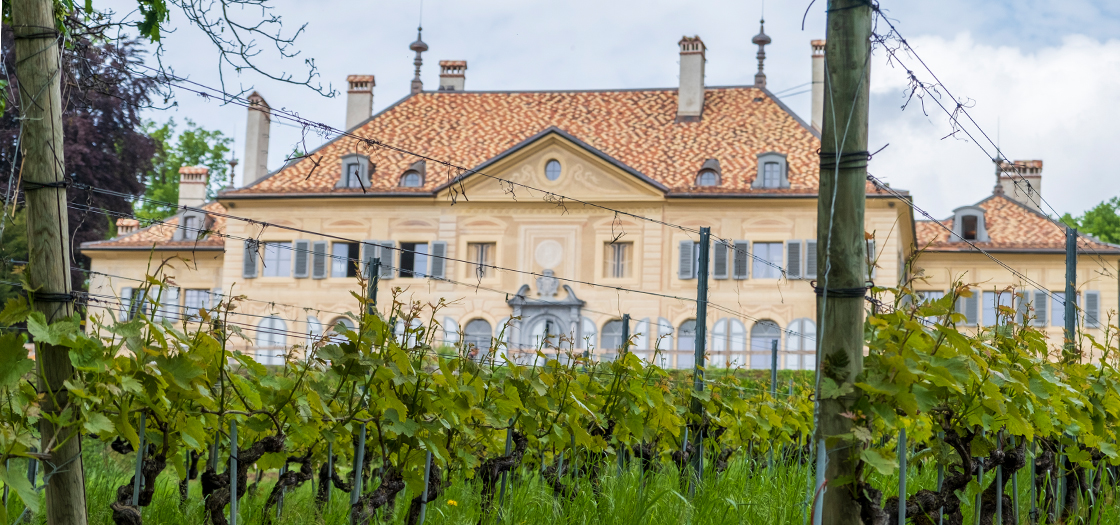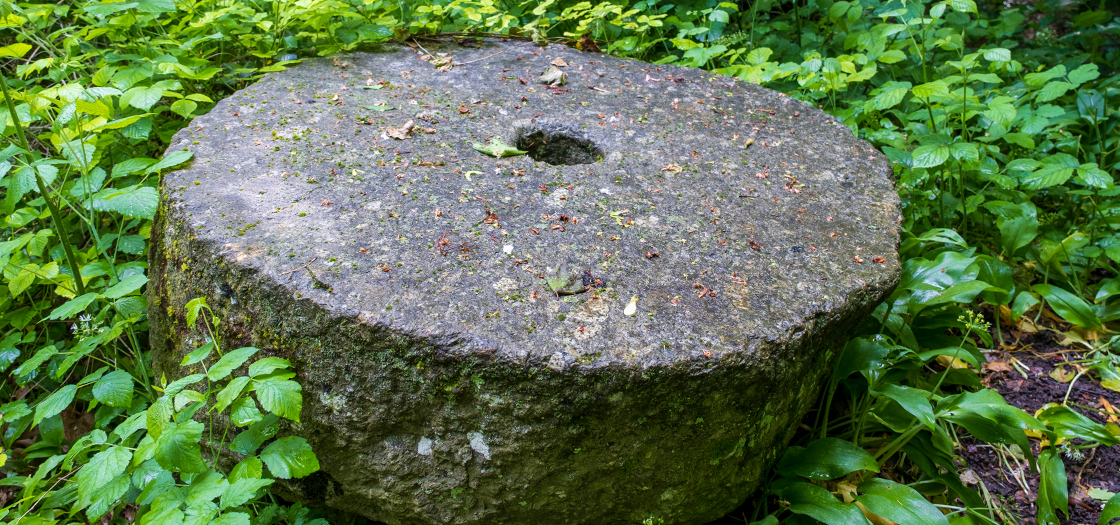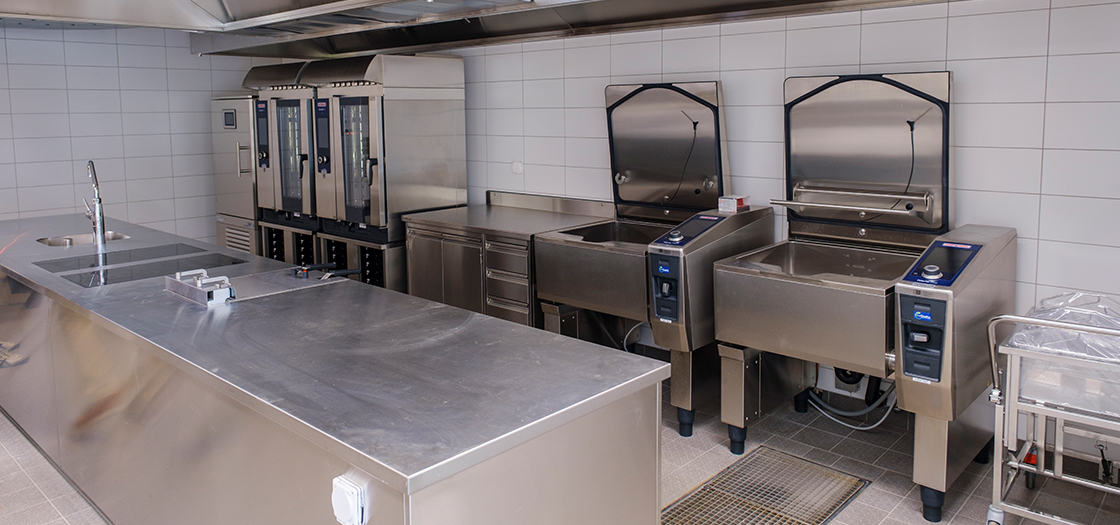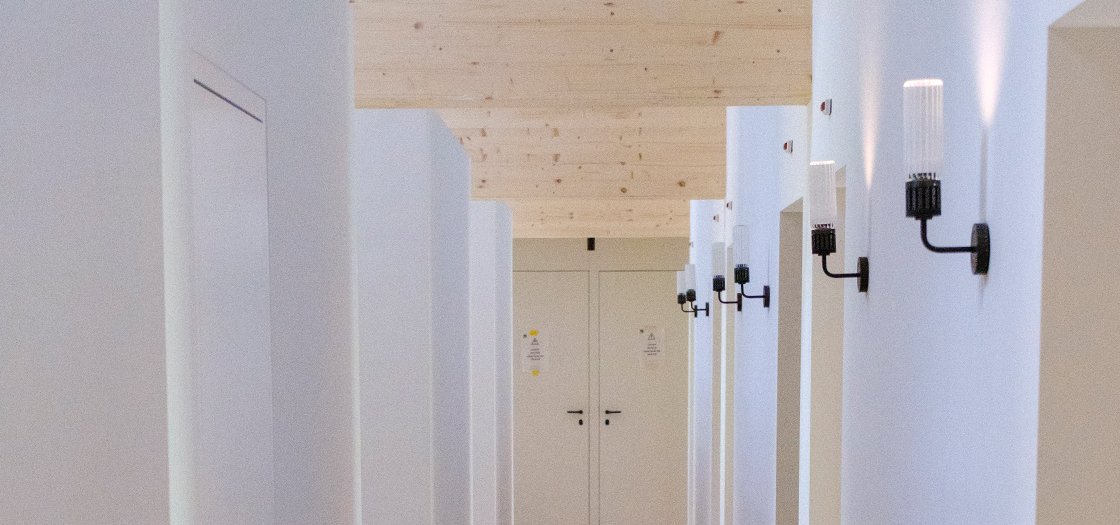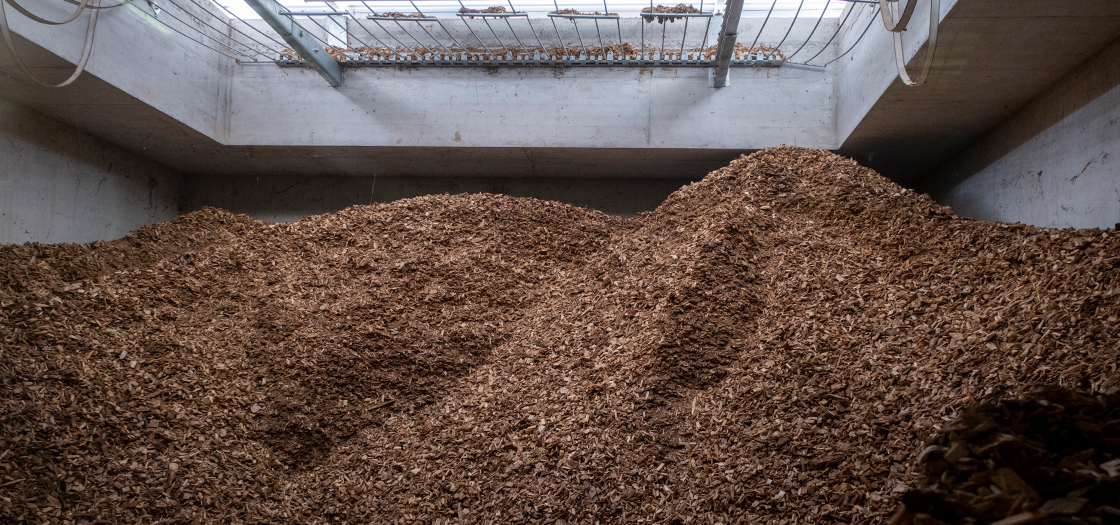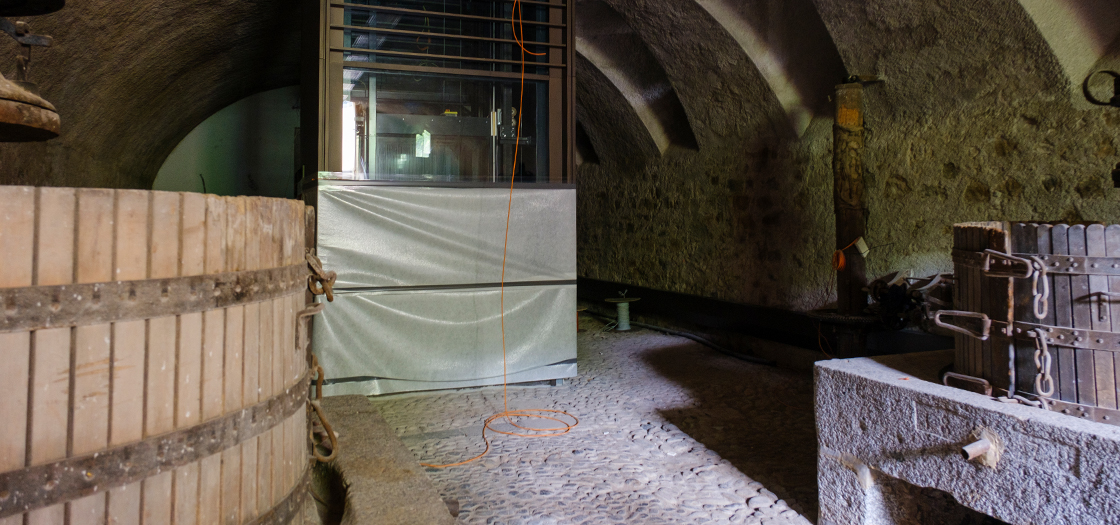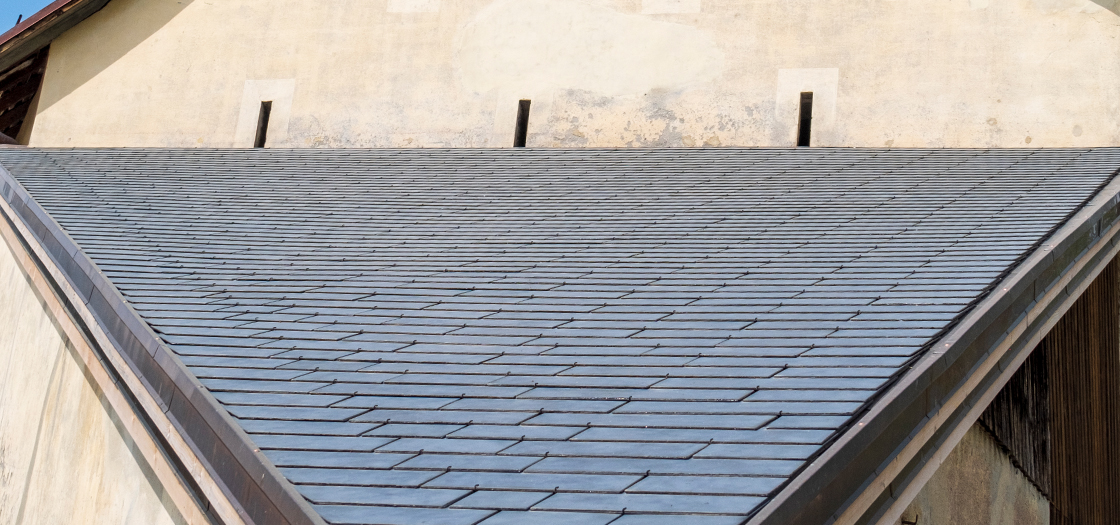A Grand Opening
With its newest international campus, Château d’Hauteville, Pepperdine will take “a giant step forward” in creating a global center for education, culture, and community
The power of Switzerland lies in its location, geographical and symbolic, as the central meeting point of Western Europe. Bordered to the north by Germany, to the east by Austria and Liechtenstein, to the south by Italy, and to the west by France, Switzerland’s famed neutrality has bolstered its international reputation as one of the most politically and financially stable nations in the world.
Since the 19th century, this stability has attracted numerous international non-governmental organizations to make Switzerland their headquarters, including the International Committee of the Red Cross; the League of Nations; the United Nations and its subsidiary agency, the World Health Organization; the World Council of Churches; the International Olympic Committee; the Fédération Internationale de Football Association; and the World Wide Fund for Nature.
Pepperdine University opened its Lausanne campus in 2007 and has hosted more than 1,000 Seaver College students there since then. In 2015, when the University’s leadership team began to discuss whether to remodel the Lausanne property or to seek a new location for its Swiss campus, they discovered a magnificent 18th-century estate for sale in the nearby commune of Blonay - Saint-Légier. After years of planning, discussion, and renovations, Pepperdine is opening its newest international campus, Château d’Hauteville, in July 2023, the acquisition and reimagining of which Gary Hanson (JD ’80), senior executive vice president, describes as “an opportunity to take a giant step forward.”
“Pepperdine’s global presence is one of the University’s enduring institutional goals.”
—Gary Hanson (JD ’80)

The entire property comprises 90 acres, 67 of which are working farmland.
![]()
A Setting Unlike Any Other
Château d’Hauteville is a 90-acre baronial estate nestled in the hills above Vevey, overlooking Lake Geneva, known to the locals as Lac Léman.
“History and culture surround this property,” says Hanson. “It is a setting for study unlike any other.” Both Hanson and Marc Goodman, the inaugural vice chancellor of Château d’Hauteville and chief administrator for the campus, were instrumental in working with the property owners and the Swiss government to make the acquisition a reality.
The Grand d’Hauteville family, which owned the estate for 11 generations, was inspired by Pepperdine’s vision to bring knowledge, learning, culture, and life to the château by transforming it into a state-of-the-art university campus. There was an almost immediate connection between the Grand d’Hautevilles and University leadership regarding Pepperdine’s commitment to renovating and maintaining the Château d’Hauteville and protecting its history for generations to come. The University finalized the sale of the property on November 5, 2019, and began renovations in earnest in December of 2020.
“The weight of its history is felt in a profound way when you realize the significance of the château.”
—Marc Goodman
“We’ve been very deliberate about not just preserving the history, but about restoring the château and making it come alive,” says Goodman. “It’s such an enriching experience if you can understand the history of the place where you’re standing.”
The stately, picturesque estate comprises the château itself, an approximately 40,400-square-foot, three-story residential structure with a large wine cellar and a grand cobblestone courtyard, along with several other buildings including an orangerie, a barn (“grange brûlée”), a gatehouse, a pavilion, a greenhouse, and a gardener’s house. The estate’s extensive grounds feature French-style formal gardens, tree-lined pathways, a vegetable and herb garden, woods, commercial vineyards, and a working farm that has been cultivated by the same Swiss family for generations.
The purchase and renovation of Château d’Hauteville is one of the most significant international endeavors that the University has ever undertaken, and Goodman is confident that the new campus will be the site of “transformational experiences for the mind, the heart, and the spirit.”
Goodman, who was chosen as vice chancellor after an extensive global search, served as the University’s general counsel for 17 years. Both he and his wife, Christine Chambers Goodman, a professor at Pepperdine’s Caruso School of Law, have previously taught as faculty-in-residence in Caruso Law’s London Program and therefore share a deep understanding and appreciation of Pepperdine’s International Programs.
“I relish this opportunity to spend daily time with our students,” Goodman says. “I’ve witnessed what the International Programs experience can do. The weight of its history is felt in a profound way when you realize the significance of the château.”
Ezra Plank, who has served as the director of the Lausanne program since 2014 and is taking on the new titles of director of the Switzerland program for Seaver College and executive director of the Hauteville campus, views the château as an ideal setting to empower students to travel, to encounter others, and to be changed in the process.
“This is an environment where people and organizations are thinking about the world, its needs, and ways to make the future bright—and for that reason, the opportunities for a conversation, a collaboration, or an internship are abundant,” he says. “Our faculty members are discovering how this unique location can be leveraged so that our conversations about science and conservation, art and beauty, story and meaning, language and culture, and faith and calling can be most impactful.”
As well as providing transformative learning, service, and leadership development experiences for both undergraduate and graduate students, Château d’Hauteville, located just one hour from Geneva, will serve as a world-class venue for retreats, conferences, and lectures on topics of global significance.
“The château is going to be a place where conversations of consequence are held,” says Goodman. Plans are already underway to host the Straus Institute for Dispute Resolution’s five-day Mediating the Litigated Case training program in global negotiation and mediation at the château this September. In collaboration with the Heritage Foundation, the University will also host a conference on European cybersecurity at the new campus this fall.
“Switzerland is a natural convening point,” says Hanson. “The château is unique in
its ability to serve as a place where Pepperdine can host important conversations
about global issues. We are taking a giant step forward in terms of Pepperdine’s global
footprint and in our role as a leading Christian university in the world.”
Around the Estate
A Short History of a Grand Family
The property on which the château stands went through the hands of several noblemen from the 1300s through the mid-18th century. In 1760 the land and all its rights were sold to Pierre-Phillipe Cannac, who became the baron of Saint-Légier-La Chiésaz in 1768.
Pierre-Phillipe substantially enlarged the original baronial mansion between 1760 and 1768 by adding large wings to either side, creating the château building that stands today.
In the late 18th century, the château became the site of the local courts. Consequently, the cellar contained three jail cells in which prisoners awaiting trial were held; these have been transformed into restrooms and a storage room as part of Pepperdine’s renovation.
Upon inheriting the estate in 1794, Pierre-Phillipe’s granddaughter, Victoire, and her husband, Daniel Grand de la Chaise, adopted a new surname that combined Daniel’s last name with the name of the Cannacs’ barony, and thus the Grand d’Hauteville family was born.
Perhaps the most widely attended event at the château was the wedding reception of Daniel and Victoire’s daughter, Aimée, to her cousin, Eric-Magnus Grand, in 1811. Hundreds of family, friends, and dignitaries came by horseback and carriage for the celebration, which featured the performance of two comic plays, Chacun Son Caractère and La Comète.
![]()
A New International Endeavor

A view of Lake Geneva and the Alps from campus
Pepperdine has a long history of popular international academic programs. In fact, 80 percent of Seaver College undergraduates participate in a study-abroad opportunity, and 2023 marks the 60th anniversary of the University’s International Programs department. In the fall of 1963, 36 Pepperdine College undergraduates went to study in Heidelberg, Germany, as the inaugural class of the Year-in-Europe program, later named International Programs. At that time, international travel, particularly to Europe, was considered an important part of a university education, and it harkened back to the tradition of the “Grand Tour,” a rite of passage in which young English noblemen would conclude their educations by traveling to continental Europe to visit ancient ruins, view famous artworks, and collect souvenirs of their journeys. Pepperdine’s Heidelberg program was a great success, and additional European study opportunities followed—first in London in 1984, then in Florence in 1985, and finally in Lausanne in 2007.
“The Pepperdine model of a university owning its international campuses is ideal for students who are living abroad for the first time,” says Plank. “It allows the University to shape more intentionally the conditions, standards, and outcomes of that experience.”
Pepperdine’s Lausanne location, Maison du Lac, was previously the University’s largest European campus. That facility featured three classrooms, two large study rooms with computers, three small study rooms, a library, a student center with a media room and a music room, a dining room, a large industrial kitchen, an outdoor garden area, and living accommodations for 70 students.
In contrast, the new Château d’Hauteville campus offers five classrooms; two conference rooms; a library; a large, majestic reception hall known as the Grand Salon; administrative offices; a student kitchen; a lounge; a wine cellar that now serves as an underground meeting area; an apartment for the vice chancellor and his family; and bedrooms that each accommodate two to eight students.
The two-story orangerie features a dining hall that seats 150, a commercial kitchen, single bedrooms for graduate students, and an apartment for faculty-in-residence. The gatehouse contains two additional apartments, and after future renovations, the gardener’s house will provide seven more rooms for students and another apartment for faculty-in-residence.
![]()
A Campus in a Château
It was no easy task to reimagine an 18th-century baronial estate as a 21st-century college campus. As a recognized Class 1 Historic Monument, Switzerland’s highest protected class, the entire estate falls under the jurisdiction of the Federal Committee for the Protection of Cultural Property and was therefore subject to many regulations regarding its renovation. “It required obtaining special approvals to renovate, restore, and convert the property into a state-of-the-art university,” Hanson explains.
Nicolas Delachaux, of the architectural firm Glatz–Delachaux Architectes Associés in nearby Nyon, served as the lead architect. The firm has considerable experience with large historic restoration projects in Switzerland, including an extensive renovation of La Ferme–Château du Bois de Chênes, a 17th-century estate in Genolier, which was awarded a 2020 European Heritage Award for Conservation and Adaptive Reuse.
A Fanciful Facade
Designed for the estate by the architect Claude-Pierre Cochet in the 1760s upon commission by then-owner Baron Pierre-Philippe Cannac, the facade of the Château d’Hauteville is punctuated by hand-painted trompe-l’œil (“deceives the eye”) exterior window trim, sweeping swag designs, decorative moldings and corbels, and a dramatic family crest flanked by two lions above the main entrance of the estate. Local artisans restored the original exterior paint during the château’s recent renovations and gave it a dimensional, patinated finish.
The last time the château had been renovated was in 1913, so when Delachaux and his crew began work in 2020, they were looking at a building that had remained all but untouched for more than a century. “The guiding motivation of the project was maintaining a balance between history and modernity,” says Delachaux. “Everything we have done here is for the preservation of the monument and the benefit of the students.”
All the requirements of a modern university had to be carefully designed to fit within the château’s original 30 rooms; as a Class 1 Historic Monument, nothing could be added to or taken away from the existing structures. For instance, walls could not be knocked down in order to make the necessary electrical and plumbing improvements, so many of the student bathrooms are grouped together to minimize the space required for the technical upgrades.
One of the most difficult and delicate challenges of the restoration was an architectural feature that makes the château unique in Switzerland: its intricate, hand-painted trompe-l’œil facade. The exterior walls of the entire château are painted in such a way that it gives the appearance of three-dimensional design details such as false windows and shutters, arches, cornices, friezes, architraves, and other ornamentation. Even the medallion displaying the family crest above the entrance that appears to be carved from stone is actually a painting on the flat exterior surface. These facades were so delicate that the construction crew had to install a special freestanding scaffolding system, rather than using the standard technique of anchoring the scaffolding to the walls.
The trompe-l’œil effect—which literally translates to “deceives the eye”—is also used liberally in the château’s Grand Salon, which features faux architectural embellishments on its walls and a simulated dome on its ceiling. In addition, the Grand Salon is home to floor-to-ceiling Italianate murals depicting scenes from Greek and Roman history and mythology. During Pepperdine’s renovation, these centuries-old works of art, as well as the interior and exterior decorative painted effects, were meticulously restored by hand by local artisans.
![]()
A Thoroughly Modern Château
The orangerie, built in 1826 and originally used as a stable, was the structure that made the transformation from a private residence to a university campus possible, as it was the only building on the estate large enough to accommodate the required 150-seat dining hall and its accompanying commercial kitchen.
Every facet of the renovation was a balance of tradition and technology. For example, while all the château’s chimney stacks were restored, only those connected to the seven “most beautiful” fireplaces were refurbished as functioning chimneys, while the others now house—and hide—ventilation ducts, according to Delachaux.
“One of our most difficult tasks was finding the space for the modern technology required by a university campus,” he says. “We used every single empty and hollow area. We were always aware of our need to use the least invasive technologies to preserve the integrity of the château’s structure.”
In the orangerie, an elevator was installed to provide greater accessibility to the dining hall, kitchen, terrace, and delivery access areas. Situating an elevator within the confines of the château proved a more challenging task, however.

The large, two-story living room features distinctive 18th-century Italianate murals created in the Rococo style by the Petrini brothers, well-known
painters of the time. The paintings are said to depict the Triumph of Venus; the Roman
emperor Cincinnatus and the Volscians; and Brennus, a chieftain of the Senones, negotiating
with the Roman Senate. The trompe l’œil technique employed on the ceiling creates
a domed effect that draws the eyes up to a scene depicting several female nudes.
“One of our technical experts’ liveliest debates centered on how to make the cellar more accessible for campus events and other public activities,” says Delachaux. “We needed to identify the areas where losing part of the historical structure would cause the least harm.”
Ultimately, a single elevator with service to all floors was installed with minimal loss of the cellar ceiling’s historic material. Because the cellar where the wine casks were stored had originally been separated from the room that housed the wine presses by a stone wall with a large door, Delachaux views the new metal-and-glass elevator as a reinterpretation of that traditional separation. “In the end, we achieved a lovely balancing act,” he says.
“Everything we have done here is for the preservation of the monument and the benefit of the students.”
—Nicolas Delachaux
The campus will be virtually car-free, with students using public and other transportation to travel to Vevey and beyond. The estate even has a Swiss Federal Railways train stop, named for the château, just across the street from its front gate. In addition, a portion of the château’s electricity is provided by extremely thin solar panels on the gatehouse and barn roofs that match the historic tiles surrounding them. They blend in so well, says Delachaux, that they are nearly imperceptible. The château is also heated by a wood-burning furnace, with the commune of Blonay - Saint-Légier providing its sustainable fuel: wood chips from nearby forests that were once part of the estate.
Although he has guided the renovation of other historic mansions and estates in the past, Delachaux notes that this has been a unique project for him and his team. “To turn this château into a university campus was a very big challenge,” he says. “This is something special. We are happy to have the students here in Hauteville, and we hope that what we have done here will make the students happy. Pepperdine is exceptional.”
![]()
The Global Classroom

The serene pavilion set along the shore of Lake Geneva offers
a quiet location for reflection and contemplation.
Operating as a full university campus, Château d’Hauteville will provide the top-tier educational experience Pepperdine is known for in its most expansive, most historical, and most resplendent international location to date. In the inaugural fall 2023 term, the academic emphasis will be on general education courses such as French, world civilizations, earth science, Christianity and culture, plants and the environment, and sociology. Educational opportunities for graduate students will include foreign policy and alternative dispute resolution, among others.
While engaging in their studies, students will also have the chance to participate in the estate’s agricultural rhythms by tending the vegetable and herb garden, harvesting grapes in the vineyards, and in the future, pruning the trees in the planned orchards. Students will collect bear garlic in the spring and bake bread and pizza in the château’s centuries-old stone ovens.
Darlene Rivas, professor of history at Pepperdine, will serve as one of the château’s first faculty-in-residence members, teaching History 204: History of the American Peoples in the fall term and History 450: Modern History of Africa in the spring. She has previously taught in Pepperdine’s Buenos Aires, Heidelberg, and Lausanne study-abroad programs.
“I have found that the living-and-learning environment of International Programs offers opportunities for faculty to impact students’ lives in life-giving ways,” she says. “I value getting to know the students and having conversations and experiences with them, not just in the classroom or in my office, but also over meals, in buses, and on trains. The transformative experience of living abroad offers an amazing opportunity to join students in making a major leap forward in their lives.”
“The transformative experience of living abroad offers an amazing opportunity to join students in making a major leap forward in their lives.”
—Darlene Rivas
Rivas is particularly galvanized by the opportunity to work with the first-ever cohort at the new campus. “The 2023–2024 students will have an opportunity to create traditions and make connections that subsequent cohorts will get to enjoy,” she says. “They will be the first to establish relationships and connections with local groups to foster mutual cultural learning, nurture service opportunities, cultivate sustainability partnerships, and more.”
Plank, who teaches religion courses in addition to performing his administrative duties, has witnessed the transformational quality of international education. “Students step away from home, often for the first time, and they experience many different ways of speaking, thinking, and living,” he says. “The sometimes-simple narrative which students believed governs life is suddenly insufficient. Life is more complex than they thought. Students learn that there is nothing to fear from new ideas and experiences, and they become better at the process of making meaning in a complex age.”
![]()
A Look to the Future
Château d’Hauteville is the next chapter in the continuing story of the University’s commitment to unparalleled study-abroad experiences that allow for adventure, personal growth, and academic rigor. “Pepperdine’s global presence is one of the University’s enduring institutional goals—that students have international experiences and meet different people from different places to get a different perspective,” says Hanson. “Traveling and living abroad allows students to grow, helps them mature, and opens their eyes in terms of being world citizens. It’s all part of a high-quality education.”
With its wide offering of educational programs and on-site housing for both undergraduate and graduate students, Château d’Hauteville will be the largest and most comprehensive campus available to Pepperdine students outside of Malibu. In the future, Hanson says, the lessons learned here may be applied to the University’s other International Programs locations.
Goodman sees the opening of the new campus as an exciting opportunity for Pepperdine students and the local community to grow and learn from each other. “One of the factors that convinced the Grand d’Hautevilles to sell the estate to Pepperdine was the idea that we would bring back life to the château with all the energy of the students,” he says. “I can’t wait to see our students experience the rich fullness of this campus. I’ve seen it again and again when people visit: Château d’Hauteville provides an atmosphere of inspiration you can’t get anywhere else.”
A Grand Connection to American History
Both the Cannac and Grand d’Hauteville families have longstanding ties with the United States.
Pierre-Phillipe Cannac installed the first lightning rod in Switzerland atop the château on the advice of its inventor, Benjamin Franklin.
Daniel Grand d’Hauteville’s father and uncle, Rodolphe-Ferdinand and Georges Grand, were bankers who helped finance the foundation of the newly established US Republic, and the family archives contain letters to and from Franklin, Thomas Jefferson, John Adams, and other major political figures.
In a later generation of the family, Frederick Sears Grand d’Hauteville fought in the American Civil War, and his intact Union uniform was discovered in a trunk in the château’s attic in the 2010s.


